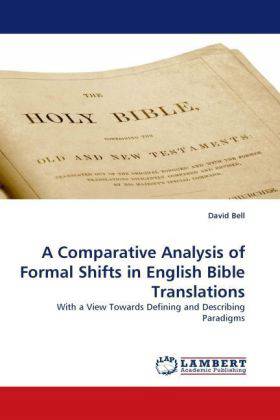
- Afhalen na 1 uur in een winkel met voorraad
- Gratis thuislevering in België vanaf € 30
- Ruim aanbod met 7 miljoen producten
- Afhalen na 1 uur in een winkel met voorraad
- Gratis thuislevering in België vanaf € 30
- Ruim aanbod met 7 miljoen producten
Zoeken
A Comparative Analysis of Formal Shifts in English Bible Translations
With a View Towards Defining and Describing Paradigms
David Bell
Paperback | Engels
€ 48,45
+ 96 punten
Omschrijving
Anyone who has worked with translation in general and Bible translations specifically knows that there has been a major paradigm shift between the traditional translations, often labeled as formal equivalent, and the modern translations, commonly known as functional equivalent. And yet, it is often difficult to document in a truly objective fashion what exactly this difference is. This book seeks to begin this process by carrying out an extensive comparative analysis of ten different English translations, designed to single out through statistically relevant data the types of formal shifts which characterise this change in paradigm. The results not only point to historical differences between translations but also open up new insight into translational practice.
Specificaties
Betrokkenen
- Auteur(s):
- Uitgeverij:
Inhoud
- Aantal bladzijden:
- 552
- Taal:
- Engels
Eigenschappen
- Productcode (EAN):
- 9783838316833
- Verschijningsdatum:
- 5/06/2010
- Uitvoering:
- Paperback
- Formaat:
- Trade paperback (VS)
- Afmetingen:
- 152 mm x 229 mm
- Gewicht:
- 798 g

Alleen bij Standaard Boekhandel
+ 96 punten op je klantenkaart van Standaard Boekhandel
Beoordelingen
We publiceren alleen reviews die voldoen aan de voorwaarden voor reviews. Bekijk onze voorwaarden voor reviews.











